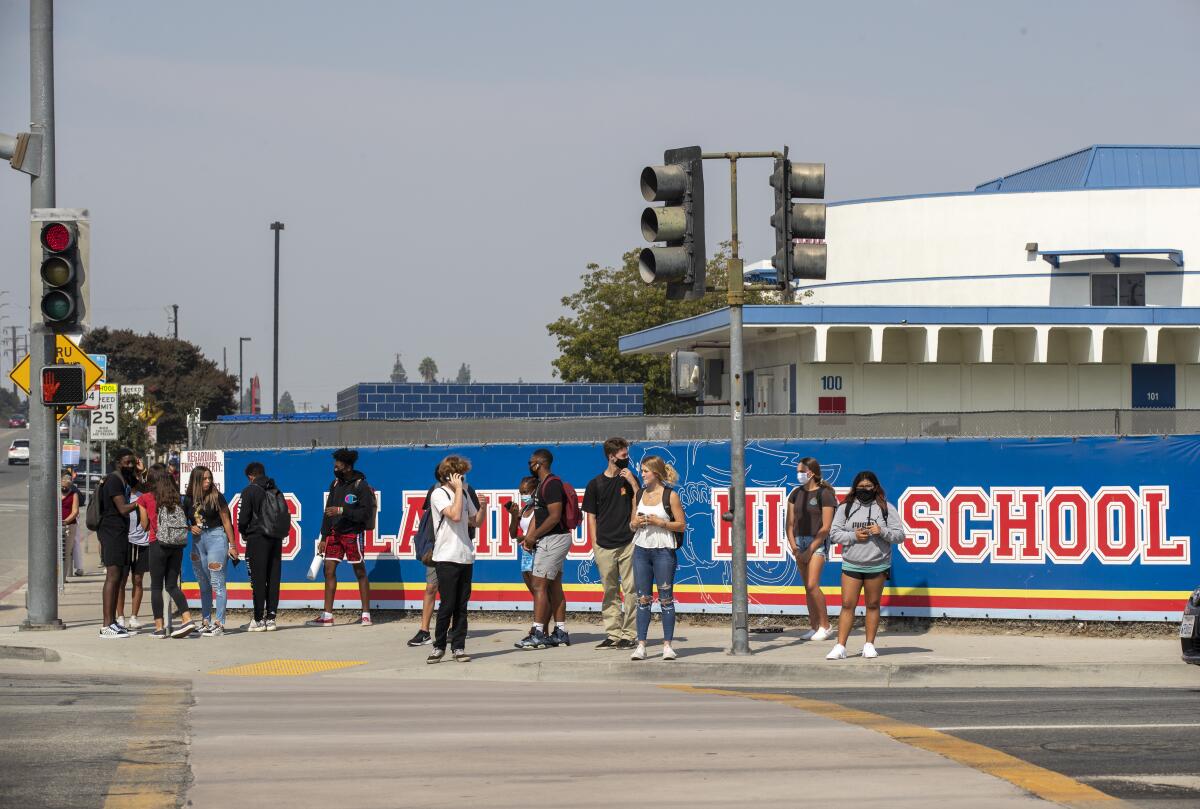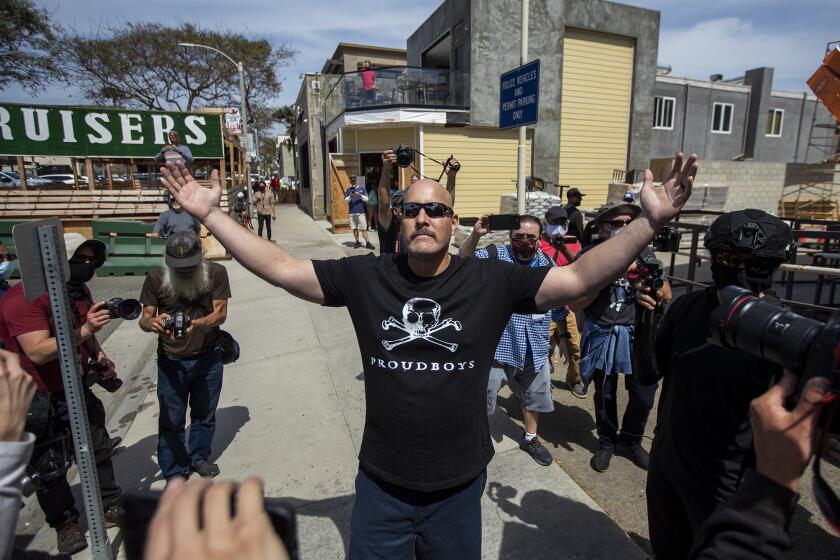Apodaca: Misinformation about state curriculum stymie efforts to provide ethnic studies

Perhaps we can take it as a sign that California really is close to containing the spread of COVID-19 that we seem to be arguing less about the perils of online education and the pace of schools reopening, and are increasingly returning to battles over what students are taught.
In particular, the small but vocal contingent of haters of ethnic studies and anti-bias education are back in the news, revving up the controversy again just as school districts throughout the state are considering a new curriculum. And surprise, surprise, there’s a lot of misinformation being tossed about.
The controversy was reignited in March, when the state Board of Education adopted an ethnic studies model curriculum for high schools. The nearly 900-page document — the product of four years of work, four drafts, grueling debates and a great deal of compromise — is actually not a fixed curriculum but a set of guidelines laying out goals and principles.
Importantly, the framework, the first of its kind in the nation, is strictly voluntary. It is up to school districts to decide which parts of the suggested lesson plans and instructional ideas they will use.
Last September, Gov. Gavin Newsom vetoed a bill that would have made ethnic studies a requirement for high school graduation, saying that the proposed curriculum in the legislation was “insufficiently balanced and inclusive.” The bill has been reintroduced.
I think it’s safe to say that no one is or will be 100% satisfied with the model curriculum. Even after all the tinkering and rewriting to address the concerns of various constituencies, it will still be viewed by some as little more than left-wing propaganda, while others are convinced that the board caved to right-wing interests.
And while the suggested lesson plans are intended to teach students about the histories, struggles and contributions of diverse groups, including Black, Latino, Asian, Native American, Jewish, Armenian and Sikh communities, the end result has left some critics underwhelmed by the treatment of the effects of racism. The curriculum, some contend, offers little more than a bland study of multiculturalism.
These arguments will continue to play out and will no doubt influence the development of both ethnic studies and social justice teaching standards going forward. Curriculum is not static. It evolves over time, hopefully in this case for the better.
But here’s the problem with the angriest, loudest voices in the room right now — the kind of voices that prompted the Los Alamitos Unified school board to move a recent meeting online after the local police department expressed safety concerns.
The battle to make the world a kinder place is up against a steady increase in hate-related activity, writes columnist Patrice Apodaca.
At the meeting the board voted unanimously to approve a set of social justice standards, intended to promote such qualities as kindness and inclusivity. So, hardly radical stuff. The proposed curriculum for a high school ethnic studies elective for the district is due for a vote in June, and a similar uproar will undoubtedly be heard.
Some people — who probably represent a small but noisy minority — aren’t the least bit interested in learning more about ethnic studies, anti-bias education and efforts to help students think critically about our history and society. They are not debating the finer points of particular programs and standards.
No, the critics who are getting the most attention are the ones who simply don’t approve of the very concept behind this sort of education in the first place — or at least the version that exists in their imaginations.
To their way of thinking, it’s the idea of offering ethnic studies or social-justice education in schools that angers them. They believe such educational goals inherently mean that students are being set up to be brainwashed into believing that all white people are evil racists. End of discussion.
They often bandy about, absent any deep examination, controversial terms such as “critical race theory,” a frequently misunderstood way of considering how race and racism are embedded in institutional and systematic inequities.
The trouble is that some of the misinformation often repeated by those who are stridently opposed to any rethinking of how we teach history could be influencing the viewpoints of others. That’s why it’s vital, as school districts make their decisions in the months ahead, for all of us to learn what is actually being proposed before making our own judgments.
Again, I’m not suggesting that the state’s ethnic studies framework — or any school curriculum or program for that matter — is perfect. That’s an impossible standard to uphold. Nor am I saying that criticism should not be heard. Of course it should.
But any concerns that are raised should be based on what is actually in the curriculum. We must look at what the standards really say and what districts are considering doing, and not succumb to conspiracy theories about hidden agendas and influence campaigns.
And keep in mind that hundreds of school districts already offer ethnic studies electives. Or, as is the case at Newport-Mesa Unified, “ethnic studies are woven throughout our history [and] social studies courses,” according to district spokesperson Annette Franco.
A deeper, more inclusive study of our complicated history has been a long time coming. We’d be a whole lot better off if we all took part in the discussion about the best means of achieving that goal, rather than joining a knee-jerk faction trying to stop it altogether.
Support our coverage by becoming a digital subscriber.
All the latest on Orange County from Orange County.
Get our free TimesOC newsletter.
You may occasionally receive promotional content from the Daily Pilot.





